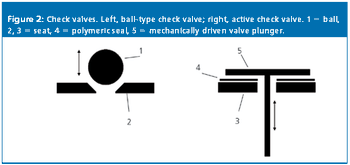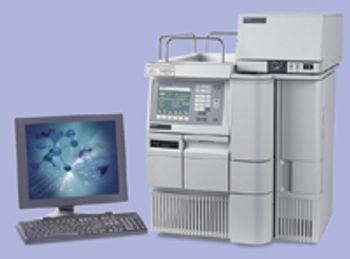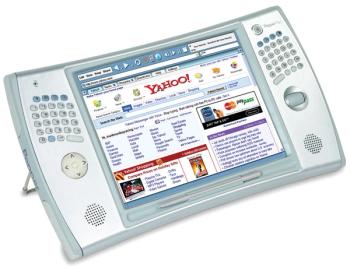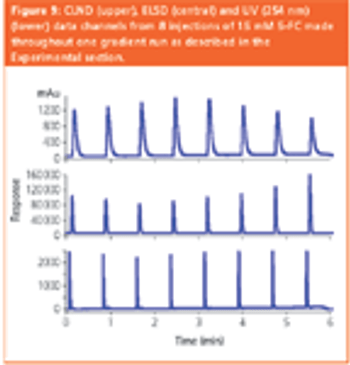
LCGC Europe
Check valves can be replaced with new ones, but often a simple cleaning procedure is sufficient to restore normal operation.

LCGC Europe
Check valves can be replaced with new ones, but often a simple cleaning procedure is sufficient to restore normal operation.

LCGC Europe
Capillary gas chromatography (GC) is a well-established separation technique. Rick Parmely reviews some of the capillary column basics by investigating a standard test mixture and observing some of the chromatographic effects that can affect peak response, peak shape and column bleed. He provides guidelines for obtaining the best performance from a capillary column. He discusses peak tailing, column overload, ghost peaks and column bleed and speculates on "when to give up." He concludes with a set of fundamental steps to be used in achieving better GC analyses.

LCGC Europe
Two LC workshops will be held between 8?10 May at The Rubens at The Palace Hotel, London, UK. The courses are aimed at improving method development and providing solutions to common problems that occur with LC methods. The courses are brought by LC Resources and LCGC Europe, and sponsored by Hichrom.

LCGC Europe
Pepper Computer Inc. has announced a new version of software for its Pepper Pad handheld media computer that brings users major new capabilities, such as integration with Yahoo's industry-leading Flickr photo-sharing community, while giving the Pad quicker performance.

LCGC Europe
Part 2 of the column explores using the right balance for the right job in the right way.

LCGC Europe
This article assesses the extent to which some familiar HPLC detectors can provide reliable quantitative analytical measurements when no suitable primary reference standard exists. The advantages and limitations of two candidate detector schemes are discussed ? evaporative light-scattering detection (ELSD) and chemiluminescent nitrogen detection (CLND). It was found that when the ERETIC (Electronic REference To access In-vivo Concentrations) method in proton NMR was used as a "gold standard" reference procedure the ability of CLND to provide reliable single calibrant quantification is superior to ELSD. Furthermore, ELSD showed bias towards underestimation of chromatographically-resolved impurities, resulting in an overestimation of analyte purity.